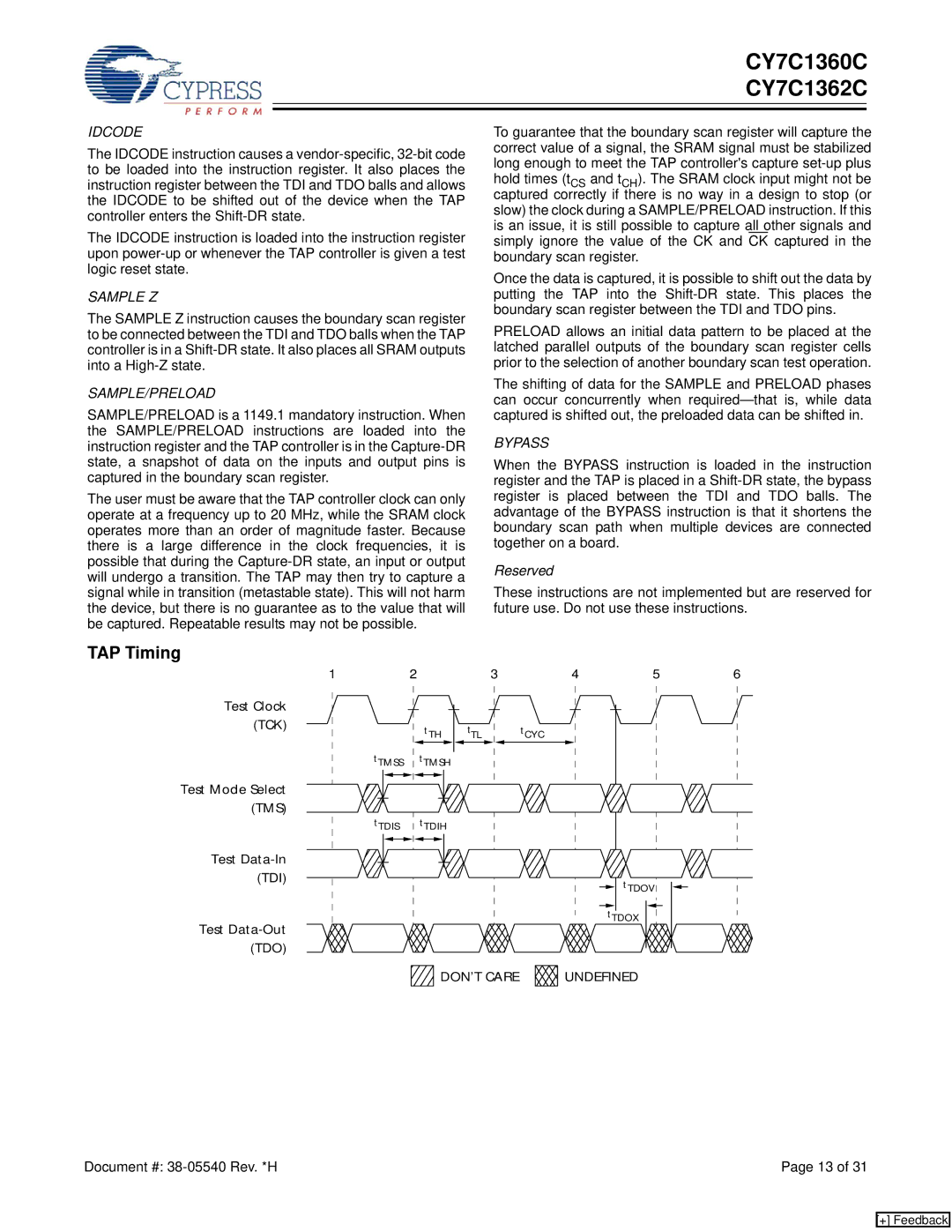
CY7C1360C
CY7C1362C
IDCODE
The IDCODE instruction causes a
The IDCODE instruction is loaded into the instruction register upon
SAMPLE Z
The SAMPLE Z instruction causes the boundary scan register to be connected between the TDI and TDO balls when the TAP controller is in a
SAMPLE/PRELOAD
SAMPLE/PRELOAD is a 1149.1 mandatory instruction. When the SAMPLE/PRELOAD instructions are loaded into the instruction register and the TAP controller is in the
The user must be aware that the TAP controller clock can only operate at a frequency up to 20 MHz, while the SRAM clock operates more than an order of magnitude faster. Because there is a large difference in the clock frequencies, it is possible that during the
To guarantee that the boundary scan register will capture the correct value of a signal, the SRAM signal must be stabilized long enough to meet the TAP controller's capture
Once the data is captured, it is possible to shift out the data by putting the TAP into the
PRELOAD allows an initial data pattern to be placed at the latched parallel outputs of the boundary scan register cells prior to the selection of another boundary scan test operation.
The shifting of data for the SAMPLE and PRELOAD phases can occur concurrently when
BYPASS
When the BYPASS instruction is loaded in the instruction register and the TAP is placed in a
Reserved
These instructions are not implemented but are reserved for future use. Do not use these instructions.
TAP Timing
12
Test Clock
(TCK)tTH
tTMSS tTMSH
Test Mode Select (TMS)
tTDIS tTDIH
Test
3 | 4 | 5 | 6 |
tTL tCYC
tTDOV
tTDOX
Test
DON’T CARE | UNDEFINED |
Document #: | Page 13 of 31 |
[+] Feedback
